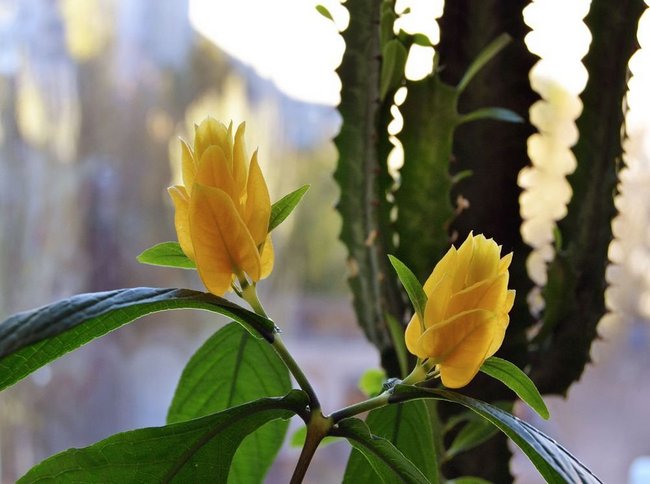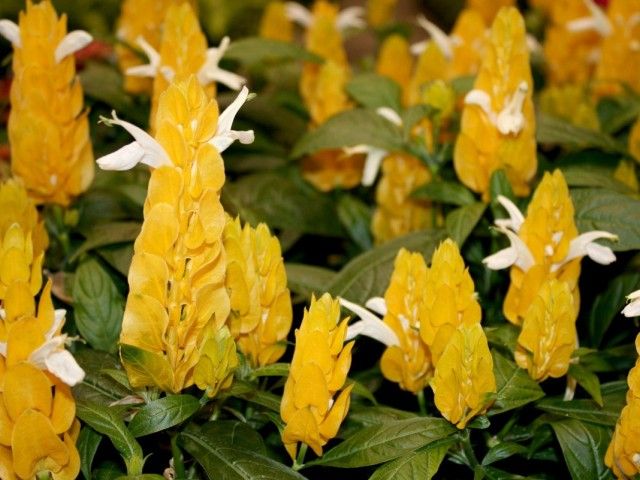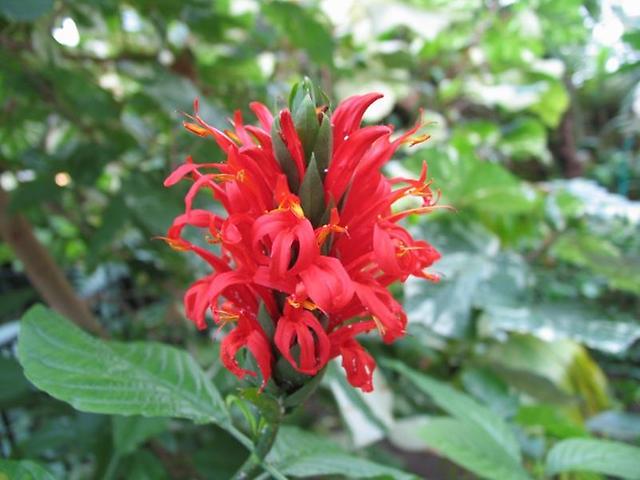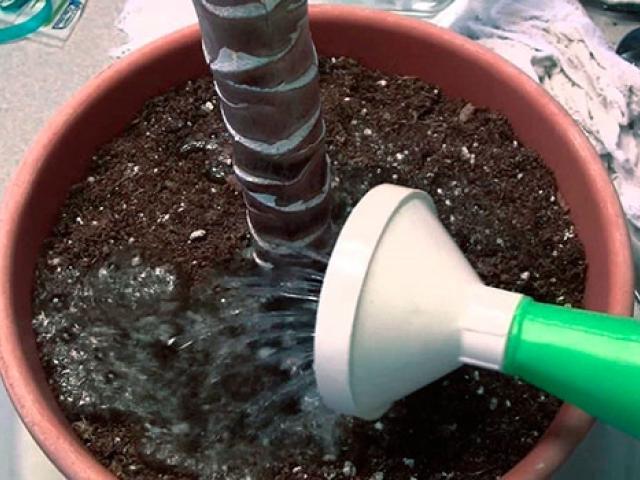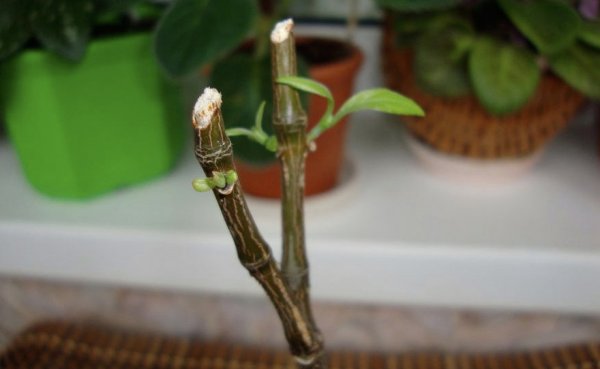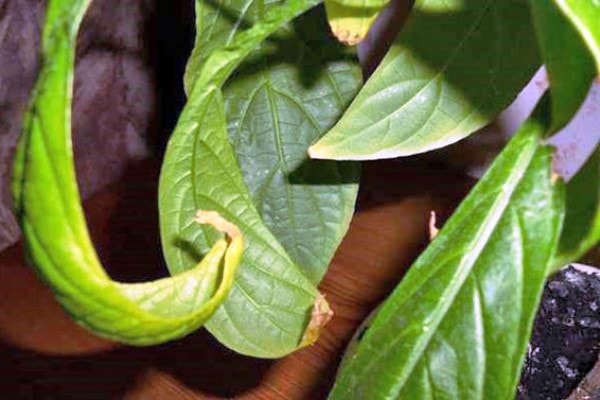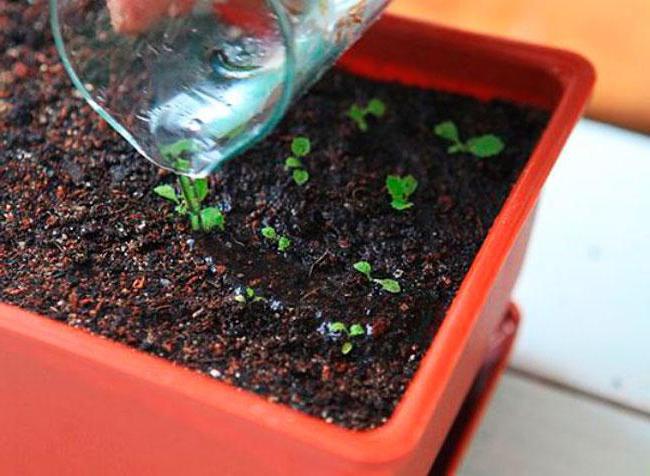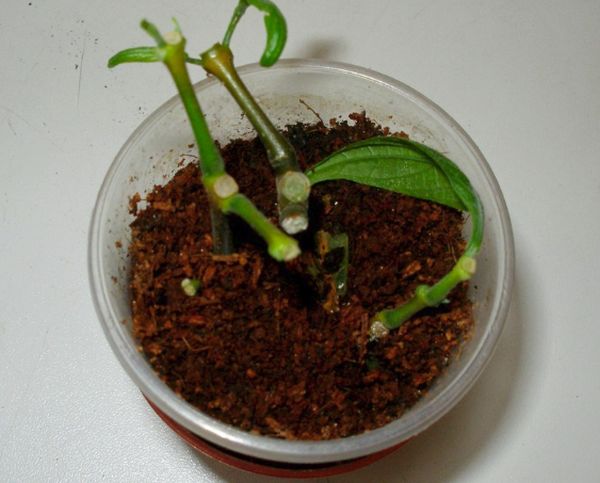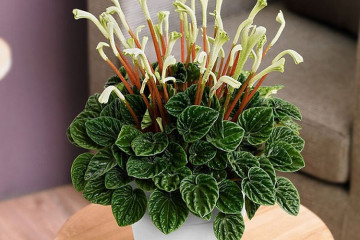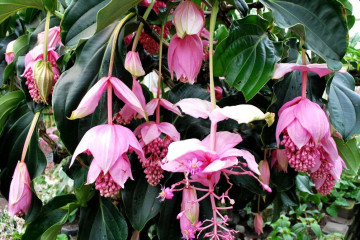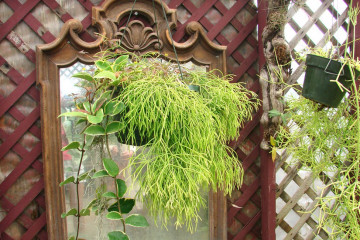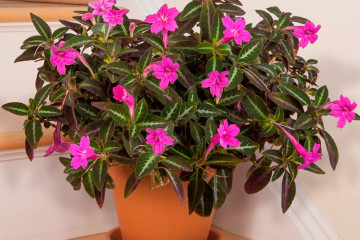Pachistachis: home care and possible problems when growing
Content:
To say that the pachistachis flower is a beautiful houseplant is to say nothing. It is a luxurious evergreen with spectacular dark green foliage and unusual spike-like flowers. Actually, the word itself is translated this way: pakhis is thick, stachis is an ear. Despite the obvious exotic beauty of this indoor flower, it is not often found on the windowsills of flower growers. This is partly due to the fact that it rarely appears on sale. On the other hand, many breeders are wary of the plant, since it cannot be called easy to care for.
A bit of history
To Europe, and then to Russia, this unusual plant arrived from India. In addition, the flower grows in the American tropics and in Peru. In the wild, the length of shoots can reach more than 2 meters, however, under conditions of home cultivation, it is difficult to find a plant more than half a meter.
The first specimens of this ornamental shrub appeared in the collections of botanists and in the greenhouses of rich salons back in the middle of the 19th century. Then interest in this plant was replaced by long oblivion. And only in the middle of the 20th century, pachistakhis reappeared on the windowsills of apartments and on the backyards of private houses.
Pachistachis and its types
Despite the fact that there are 12 species of the genus Pachistachis, only three are subject to domestic breeding. The most common of them is yellow pachystachis. From March to October, the lush crown of the shrub is decorated with erect yellow "candles" - inflorescences 10-12 cm high, from which small white flowers appear. By the way, they crumble rather quickly, but even then the pachistachis does not lose its charm. The foliage itself is quite decorative and, if the bush is formed correctly, then during the dormant period the plant will delight the grower, filling the empty space.
Another species of the genus amanthus - pachistachis red, differs from its counterpart in the larger size and color of the inflorescences. Therefore, in warm climates, it can often be found on a personal plot, rather than on a windowsill. The bryophytes of this representative of the amanth genus are light green, and the flowers are red or purple.
And, perhaps, the rarest species of this beautiful flower is spikelet pachystachis. It is practically not found in the flower collections of home plant lovers. This is partly due to the complexity of caring for the plant. Sometimes this species is confused with red pachistachis. But, nevertheless, the differences are still significant. Pachystachis spikelet has not impressive inflorescences. But exactly until the moment when flowers appear on them. They, being bright red, completely cover the bracts, while the traditional pachistachis red does not show such an abundance of flowers.
How to care for pachistachis at home
To make the pachistachis feel comfortable, you should provide it with bright, but at the same time, diffused lighting. Windows facing west or east are perfect for this. If you put a flower pot on a south window, then direct sunlight can harm the sensitive plant.On the other hand, if you place a flower on the north window, then it will suffer from a lack of light.
Changes in temperature and drafts are detrimental to this shrub, so you should maintain a constant temperature of about 20-23 ° C and do not place it in highly ventilated areas. In summer, the plant can be taken out on a terrace or balcony, but you need to make sure that the temperature difference does not exceed 4-5 ° C.
How to water pachistachis
Pachistachis is a tropical plant, which means that the humidity must be maintained at a level natural for its habitat, which is 55-60%. Frequent spraying, showering, or planting a garden fountain next to a flower will benefit an evergreen shrub. However, if the plant has given color, then water procedures should be done with caution or abandoned altogether. The fact is that yellow or red inflorescences of a flower can react badly to excess moisture.
The pachystachis plant is extremely sensitive to the watering regime, which is why it is not suitable for keeping those who are away from home for a long time. The flower needs to be watered every three days. In winter, the frequency of watering decreases. It will be enough to water the plant every 10 days. At the same time, both with summer irrigation and winter irrigation, you need to wait until the topsoil dries slightly.
Soil requirements
Many indoor plants are very demanding on the composition of the soil. Pachystachis flowers are no exception. For growth and development, they require slightly acidic, well-permeable soils. These can be found easily at a flower shop. However, making the soil yourself will not be difficult.
Ingredients: turf soil, river sand, leafy earth, humus. Take all of the above in equal parts and mix well. If the soil mixture is made on its own, then additionally it is necessary to treat the prepared soil with a weak solution of potassium permanganate in order to destroy harmful bacteria and insect larvae.
Pruning
In order for the indoor flower pachistachis to not lose its decorative effect over time and to give more flowers, it must be cut regularly. By the way, the flower tolerates this procedure quite well. The best time to stop growing stems is early spring. The first circumcision is performed when 2-3 internodes are formed. Harvested about 10-12 cm of the stem to stimulate the growth of side shoots.
Pachistachis transplant
Pachistachis transplant is carried out once a year. The first signal for the need for transplanting will be the roots of the plant sticking out of the drainage holes. If the flower feels normal, then the plant can be transplanted every two years. It will be correct to take a pot slightly larger than the previous one. There must be a good drainage layer in the pot.
Disease prevention
When grown properly, this flower rarely infects disease. However, if the inflorescences suddenly began to fall off, and the leaves began to curl, then something goes wrong and you should immediately come to the aid of the plant.
Perhaps the flower was struck by a pest. It is necessary to protect the shrub from aphids, which can cause significant damage to the flower. Whitefly, mealybugs and spider mites can also take a fancy to pachystachis.In this case, it is necessary to send the plant to quarantine, excluding the possibility of the spread of these insects to other plants.
Why do the leaves turn yellow and curl
Sometimes pakhistakhis, treated kindly with attention, and taking care of it at home like clockwork, begins to hurt. There may be several reasons, in addition to the attack of harmful insects.
For example, why do pachistachis leaves curl? An experienced florist knows that this phenomenon can be due to dry air. In this case, it is worth taking measures to moisturize it. Frequent spraying or moving shrubbery away from a room radiator will likely improve the situation.
Why does pachistachis not bloom, but its stems are stretched out? The problem is insufficient sanctification. The situation can be easily remedied by moving the plant to a lighter area and pruning the elongated stems.
Reproduction of pachistachis at home
How to propagate pachistachis at home? There are two options: seed and cuttings.
Seeds
Since seed cultivation of this evergreen plant is a very painstaking and not always successful process, it is rarely practiced by flower growers. In order to grow pachystachis from seeds, you need to take an oblong box, which is usually used for seedlings, fill it with a nutrient mixture and distribute the seeds evenly over the entire surface.
To create a greenhouse microclimate, the pot must be covered with plastic wrap, which can be removed when watering or spraying. After about 10-14 days, the first shoots will appear. As soon as the seedlings grow up, you need to plant the flowers in individual containers.
Cuttings
It is much easier to grow a new plant by cuttings. You can root the stems that were cut during the rejuvenation of the shrub. The planting material taken when pruning an adult bush should be placed in a vessel with water, which must be placed in a place where the air temperature does not exceed 22 ° C.
After 14-20 days, the first roots appear on the stems. As soon as the roots get stronger, the young plant should be transplanted into an individual peat pot or plastic cup.
The next stage is planting in an individual pot. You can also root the plant without first forming the roots in the water. To do this, the cut stalk must be treated with phytohormone and deepened into the ground, not reaching the lower leaves by 2-3 cm. In the case of this method of reproduction of pachistachis, the quality of the soil will determine success.
Which pot to choose
Pachistachis is a rather large plant, then, accordingly, the pot must also be of the proper size. The best choice is a low pot with a wide diameter. In it, the flower will feel comfortable, bush, and bloom profusely.
If there is a desire to grow a lush flowering bush, then several shoots can be planted in one pot. In an ordinary pot, the plant will most likely have elongated stems and look unaesthetic. This beautiful shrub should be propagated in the spring.
A little more about pachistachis
It is noticed that with the appearance of a new indoor plant in the house, the life of its inhabitants can change. Some plants are capable of causing anxiety or, on the contrary, carry positive energy.Many flowers are capable of purifying the surrounding atmosphere or predicting changes in the weather. Pachistachis, as life shows, also has a special quality.
This spectacular evergreen plant with bright flowers can bring balance and peace to the lives of those who have acquired it, as well as significantly affect the psychological climate in the family.
For an introvert or a person who has lost the will to live, the red representative of the amanth family is more suitable. Caring for pachystachis and reproduction of this flower will return a person's will to live, optimism and allow him to open up to this world.
If pachistakhis is presented to a married couple, then wisdom and mutual respect will settle in the family for a long time. Alas, this plant has no medicinal properties. But you should not be upset, since its purpose is to create an atmosphere of love, joy and happiness.
